The Continental Free Trade Area (CFTA) is widely seen as a potential stimulant for economic growth, industrialisation and sustainable development in Africa, despite some challenges which need to be addressed. Fears of significant tariff revenue losses and an uneven distribution of benefits are among the main obstacles to the continent’s market integration.
Trade liberalisation in the CFTA will lower trade costs and allow consumers to access a greater variety of products at lower prices. Lower costs for imported raw materials and intermediate inputs will increase the competitiveness of downstream producers and promote the growth of regional value chains. Trade liberalisation in Africa will also allow agribusinesses to access a large continental market of 1,284 billion people, thereby creating economies of scale. In the long run, increased competition is expected to improve agribusiness efficiency. However, small and medium-sized enterprises may struggle to compete when they are exposed to competition from more established firms as a result of the CFTA.
Thriving agribusiness will drive economic growth
Agricultural production is one of the most important economic sectors in the majority of African countries. Approximately 75% of Africans rely on agriculture for their livelihoods. History illustrates that agriculture, particularly the agribusiness and agro-industry sectors, have been a driver of economic growth in many countries across the globe, such as Brazil and China. In Africa, agribusiness and agro-industries account for more than 30% of national incomes, as well as the bulk of export revenues and employment. Scaling up agribusiness could be the next growth frontier. It could offer immediate opportunities for value addition through commodity-based industrialisation, which could lift many rural dwellers out of poverty while creating jobs across national economies.
Agribusiness also holds the key to meeting urban consumers’ demand for food, particularly value added and processed food products. Emerging economies and markets that result from the CFTA will increase demand for Africa’s farm commodities. There is vast potential for establishing production and trade links, as well as synergies between different actors along the entire agribusiness value chain (producers, processors and exporters), through the improvement of the business regulatory environment. A more enabling regulatory environment would incentivise private sector investments and encourage the competitiveness necessary to meet consumer requirements for price, quality and quantity. The shift from primary production to modern integrated agribusiness will provide lucrative opportunities to many smallholder farmers, the majority of whom are women, as well as generating jobs for the continent’s youths.
Flattening trade barriers
With enhanced skills and technology, the CFTA is projected to increase intra-African trade and expand the product range of traded goods, thereby setting the stage for increasing exports from Africa to the rest of the world. While standards, testing, conformity and assessment are applied in a manner that they become non-tariff barriers (NTBs), partner states in the East African Community (EAC) – Burundi, Kenya, Rwanda, Tanzania, Uganda and now the rookie member, South Sudan – are frantically trying to improve the application of these NTBs in a bid to increase trade across the EAC bloc.
The World Bank’s World Development Indicators show reductions in the time taken to import and export goods from each EAC partner state since the NTBs were applied, which has also helped to reduce transport costs. The time taken to import has, on average, gone down from 36 to 31 days from 2012 to 2015 and from 33 to 26 days for exports over the same period. In addition, inland transportation times from Mombasa to Kigali and Dar es Salaam to Kigali have also dropped considerably, to 5 and 3.5 daysrespectively.
The Standards Harmonisation and Conformity programme in Eastern Africa indicates thata 59% reduction (from US$500 to US$205 [€425 to €174]) in testing costs and a 74% reduction in the average testing time (from 38 days to 10 days) has been achieved across the EAC region. The results also indicate that the number of products complying with quality and standards requirements has increased through certification, thus contributing to increased intra- and extra-EAC trade values and volume, by 23% and 50% respectively (from €728,373 in 2010 to €1,780,719 in 2014). With the CFTA, this success could be replicated across the continent.
The CFTA’s potential
Despite the challenges that still remain, Africa’s agribusiness export potential can be unleashed as the constraints on the supply side are overcome by the CFTA, and preconditions are met for entry into global markets and value chains. This will enable Africa to develop its capacity to seize emerging market opportunities for higher value-added agribusiness and agro-industry products, both in developed countries and emerging economies.
Author: Richard Kamajugo – (Senior Director, Trade Environment, TradeMark Africa)


